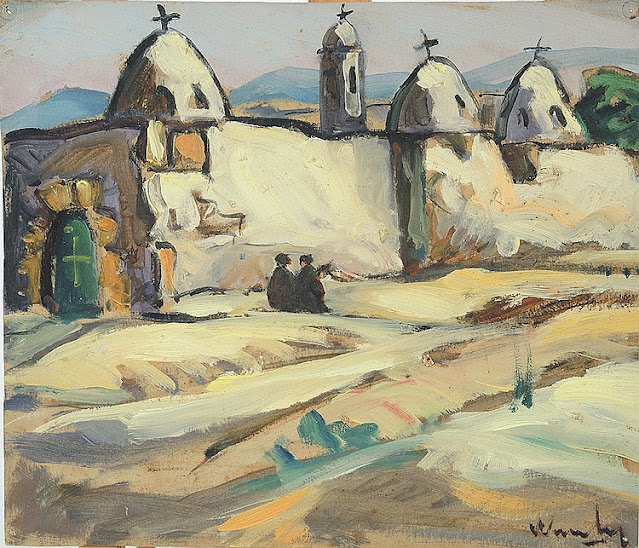He co-founded in 1951 with Jawad Saleem Jama'et Baghdad lil Fann al-Hadith (Baghdad Modern Art Group), one of the most unusual arts movements in the Middle East in the post–World War II, itwas called Istilham al-turath (Seeking inspiration from tradition), considered as "the basic point of departure, to achieve through modern styles, a cultural vision". He headed the group after the death of Saleem in 1961.
In 1971, he founded Al Bu'd al Wahad (the One-dimension Group)", which promoted the modern calligraphic school in Arab art.
His work is collected by major museums, such as Mathaf: Arab Museum of Modern Art in Doha, the Guggenheim in New York, and Sharjah Art Museum. More on Shakir Hassan Al Said
Please visit my other blogs: Art Collector, Mythology, Marine Art, Portrait of a Lady, The Orientalist, Art of the Nude and The Canals of Venice, Middle East Artists, 365 Saints and 365 Days, also visit my Boards on Pinterest
Images are copyright of their respective owners, assignees or others. Some Images may be subject to copyright
I don't own any of these images - credit is always given when due unless it is unknown to me. if I post your images without your permission, please tell me.
I do not sell art, art prints, framed posters or reproductions. Ads are shown only to compensate the hosting expenses.
If you enjoyed this post, please share with friends and family.
Thank you for visiting my blog and also for liking its posts and pages.
Please note that the content of this post primarily consists of articles available from Wikipedia or other free sources online.
.jpg)

